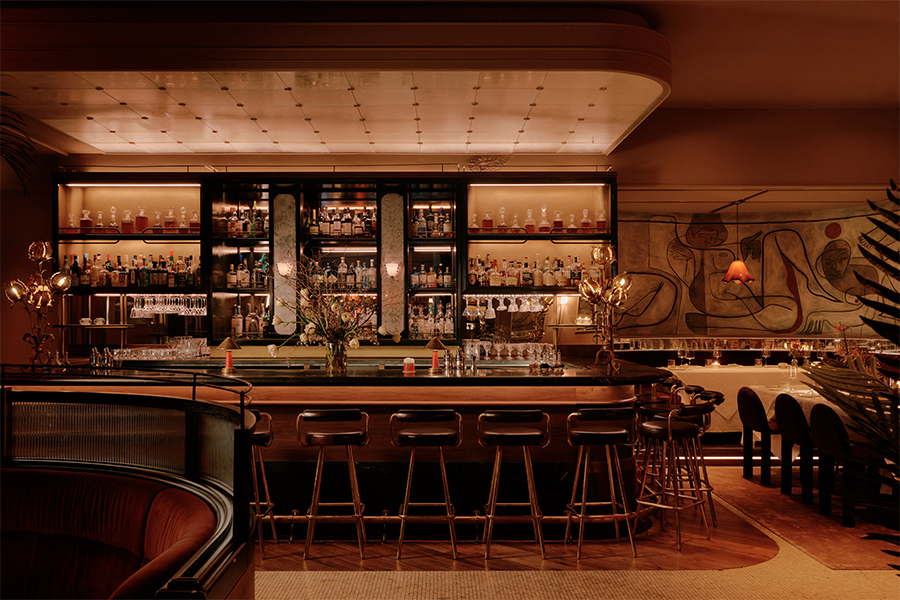When restaurateurs Joe Bastianich and Mario Batali wanted to expand their Italian steakhouse concept CarneVino to Hong Kong, they turned to restaurant powerhouse design team AvroKO. “Any Italian references were meant to be subtle however, and mostly expressed in materials and detailing,” explains William Harris, an AvroKO principal.
.jpg)
Instead, “As a muse we looked to Italian motor racing in the 1930sâ ¯specifically the Mille Miglia,” says principal Adam Farmerie, referencing the 1,000-mile open road endurance race to and from Brescia, Italy, and Rome.

Chrome and brass screensâ ¯directly referencing racecar grillesâ ¯are mixed with residential and Italian materials. Says principal Greg Bradshaw, “We wanted to be very subtle in the way we incorporated cues from the automobiles and racing world into the space.”

Steel, brass, walnut, and polished nickel make up the lighting. “Our custom lighting designs give a nod to engine piston forms, headlamp detailing, and wheel spoke layering,” says Harris. “The articulation of the arms and connection details hopefully retain the spirit of the hardware of the era and the vehicles we were referencing.”

Tailored and masculine driver seats further inspire diamond-quilted leathers and fabrics on the furniture, while a white metal racing stripe is embedded within the millwork. “It’s an interesting and fun way to draw in space,” says Harris. Leather strapsâ ¯a nod to how car hoods were fastened to the car body in the 1930sâ ¯hold large Carrara marble slabs at the entry and bar face.

To showcase the view of the Central district, the designers chose high-mounted, circular chandeliers that also aligned with the shape of the room. “The ovular ceiling motif enabled us to get maximum impact and lends a softer, more feminine form to balance the other somewhat rigid orthogonal patterning we set into the floors and walls,” says principal Kristina O’Neal.

Upon entering each section of CarneVino, diners pass through arched thresholds lined with chrome screens, which are inset into a dark wood millwork. “The screens are backlit and only at certain angles as one passes through can one notice the light pop through the tight weave,” says Harris. “That sense of morphing and movement was also important for us to capture.”

The glowing screens lining the archways couple with an illuminated wine foyer off the main entryway. “[Together] they really create a striking arrival sequence and build anticipation in a really great way,” adds Harris. Two custom brass and glass sconcesâ ¯lining the chrome-framed signage wallâ ¯act as welcome beacons, while a butcher’s cutting block does double duty as a host stand. “We love our banged-up, mismatched, three-legged antique butcher block tasting table right in the middle of all the polish,” says Harris. “It really adds a bit of humor and helps the room not take itself so darn seriously.”



